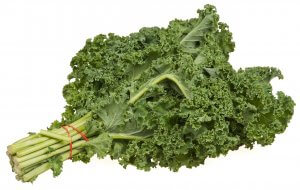What are the best substitutes for Kale?
What is the best kale substitute? Kale is a nutritious leafy green vegetable which offers many health benefits, but it may not be to everyone’s taste. It may also not be readily available in all locations. If you’re looking for a substitute for kale, consider using Spinach, Swiss Chard, Collard Greens, Cabbage, Arugula, Bok Choy, Watercress, Tatsoi, Brussel Sprouts, Mustard Greens, or Beet Greens.
Remember that each substitute may have a slightly different flavor and texture. Therefore, it is essential to experiment and find what works best for your taste preferences and the particular recipe you’re preparing.
What is Kale?
Kale is a leafy green vegetable that belongs to the Brassica family. Other vegetables in the brassica family include things like broccoli, cauliflower, and cabbage. Its history dates back thousands of years and is believed to have originated in the eastern Mediterranean and Asia Minor regions. Kale has been cultivated and consumed by various civilizations throughout history.
In the 20th century, kale’s popularity declined in many Western countries as other vegetables gained preference. However, in recent years, there has been a resurgence of interest in kale due to its recognized health benefits.
What form does Kale come in?
Kale is a versatile leafy green vegetable that is found in various forms, both fresh and processed. The most common forms of kale include:
- Fresh Kale: This is the most common and widely available form of kale. It comes as whole bunches of leaves with thick stems. You can find different varieties of fresh kale, including curly kale (with tightly ruffled leaves), Lacinato kale (with long, flat, dark green leaves), and Red Russian kale (with purplish stems and leaves).
- Baby Kale: Baby kale is a younger and more tender version of kale. It is harvested earlier than mature kale and has a milder flavor. You can use baby kale in salads and smoothies.
- Frozen Kale: Kale can be found in the frozen food section of grocery stores. Frozen kale is typically blanched to preserve its color, flavor, and nutrients. It is convenient for use in soups, stews, and smoothies.
- Kale Chips: Kale chips are a popular snack made from kale leaves that are seasoned and baked until crispy. You will often find them pre-packaged in stores or you could even try making them at home.
- Kale Powder: Kale powder is a dried and powdered form of kale leaves. You can use it as a nutritional supplement or to add extra nutrients to smoothies, juices, and other dishes.
- Dehydrated Kale: Dehydrated kale is another form of dried kale that can be used as a crunchy topping for salads. You can add it to various dishes for extra nutrients and flavor.
- Kale Pesto: Kale leaves can be used to make a pesto sauce, which is a great variation of the traditional basil pesto. You can use kale pesto as a pasta sauce or spread on sandwiches and wraps. If you want to be adventerous you could try making your own kale pesto!
TOP TIP: When buying fresh kale, look for leaves that are vibrant green, crisp, and free from wilting or yellowing. When using kale, it’s essential to remove the tough stems and ribs before cooking or eating, as they can be quite fibrous and bitter.
Okay, before we look at your kale substitute options, let’s deal with that empty cupboard situation!
Where can I buy Kale?
If you want to be more prepared and ensure you don’t run out of kale then you should stock up now.
Nowadays most delicatessens and general supermarkets stock a wide variety of kale. Or if you prefer you can also purchase kale on-line.
So why not jump on and place your order today.
STOCK UP NOW!
Just add to smoothies, or blend in to soups, stews – in fact any dish that needs an added vegetable nutrient boost.
USDA certified. 100% Organic. Non-GMO. Gluten Free. Vegan friendly.
What can I substitute for Kale?
Here are some of the best ingredients to substitute the flavor and role that kale provides in your recipes.
- Spinach
- Swiss Chard
- Collard Greens
- Cabbage
- Arugula
- Bok Choy
- Watercress
- Tatsoi
- Brussel Sprouts
- Mustard Greens
- Beet Greens
Kale substitutes
Spinach as a kale substitute
Using spinach as a substitute for kale in recipes is quite common and can be a simple and nutritious swap. Spinach has a milder flavor compared to kale, but it offers many of the same health benefits. It also works well in a variety of dishes. Here are some tips on how to use spinach as a substitute for kale:
- Raw in Salads: Spinach can be an excellent replacement for kale in salads. Simply use fresh spinach leaves instead of kale leaves and toss them with your favorite salad ingredients, such as tomatoes, cucumbers, carrots, and nuts. The mild flavor of spinach pairs well with a variety of dressings.
- Smoothies: Spinach blends well in smoothies, just like kale. You can add a handful of fresh spinach leaves to your favorite smoothie recipe for an extra nutrient boost without altering the taste too much.
- Sautéed or Stir-fried: Spinach cooks quickly and wilts down nicely when sautéed or stir-fried. Use it in place of kale in recipes that call for cooking greens, such as pasta dishes, stir-fries, and casseroles. Spinach’s tender texture makes it an ideal substitute in these applications. But remember to add it towards the end of the cooking process.
- Soups and Stews: While kale is a popular choice for hearty soups and stews, you can also use spinach as a substitute. Add the spinach towards the end of the cooking process to avoid overcooking and to preserve its vibrant color.
- Pizza Topping: Instead of using kale as a pizza topping, you can scatter fresh spinach leaves over your pizza before baking. The heat of the oven will wilt the spinach slightly, and it will add a nutritious touch to your pizza.
- Wraps and Sandwiches: Swap out kale leaves in wraps and sandwiches for spinach leaves. It adds a fresh and mild flavor, enhancing the taste of your favorite fillings.
Remember that spinach wilts down significantly more than kale, so you might need to use a larger volume of spinach to achieve the desired amount in your recipes. Additionally, since spinach has a more delicate texture, be cautious not to overcook it. If you do it can become mushy and lose some of its nutritional value.
Substitution quantitites: When substituting spinach for kale in a recipe, it’s generally a straightforward 1:1 substitution by volume. This means if a recipe calls for one cup of kale, you can use one cup of spinach instead.
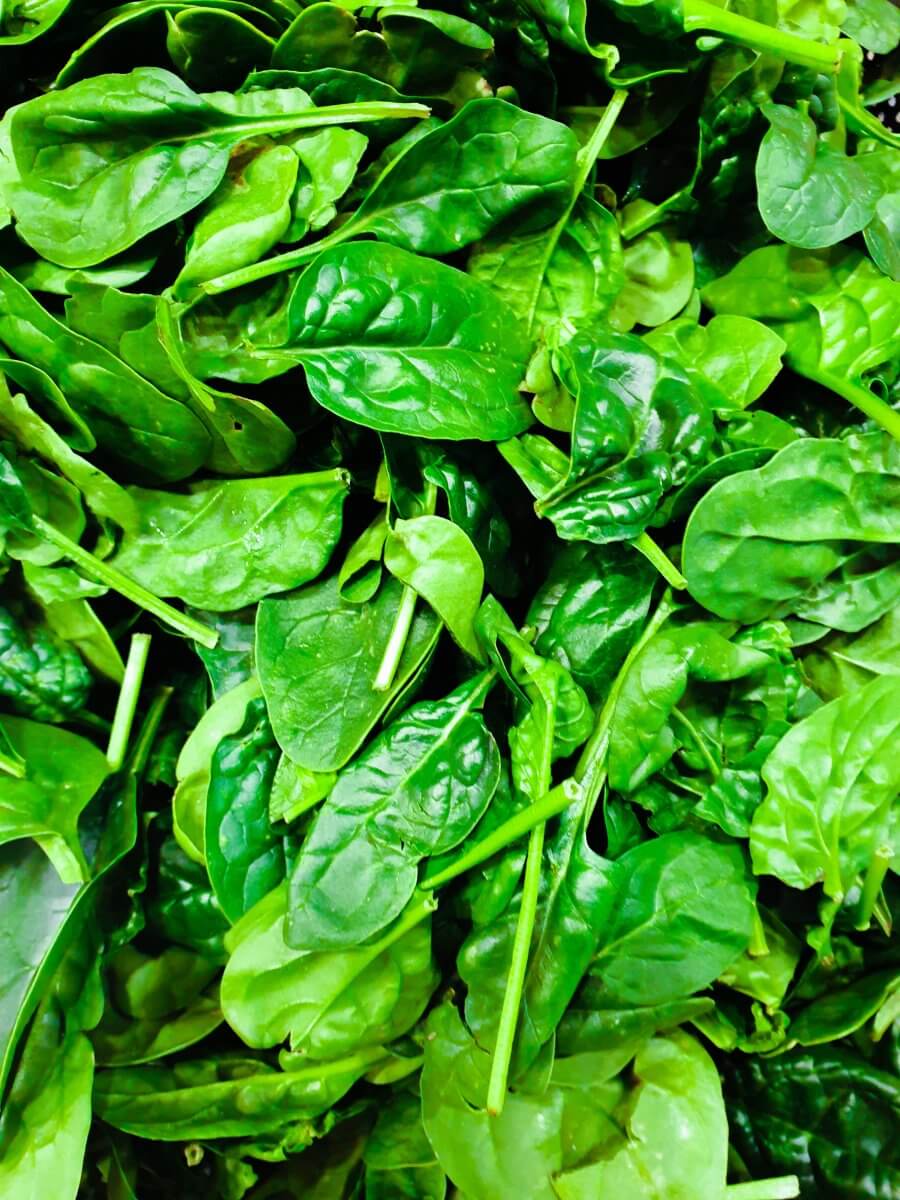
Swiss Chard
Swiss chard is a great substitute for kale as it belongs to the same family of leafy greens and offers a similar nutritional profile. It has a slightly earthy and slightly bitter taste compared to kale, but it can work well in many recipes. Here’s how you can use Swiss chard as a substitute for kale:
- Sautéed or Stir-fried: Swiss chard, like kale, can be sautéed or stir-fried as a delicious side dish or added to pasta dishes, stir-fries, and casseroles. Remove the tough stems and chop the leaves before cooking. You can cook the stems separately or add to the pan a few minutes before the leaves.
- Soups and Stews: You can use Swiss chard in place of kale in soups and stews. Just like with kale, add the chopped leaves towards the end of the cooking process to preserve their vibrant color and prevent them from becoming overcooked.
- Raw in Salads: You can eat Swiss chard leaves raw in salads, much like kale. Remove the stems and chop the leaves into bite-sized pieces. Combine them with other salad ingredients and dress with your favorite salad dressing.
- Pizza Topping: If you enjoy using kale as a pizza topping, you can use Swiss chard leaves instead. Simply tear the leaves into smaller pieces and scatter them over your pizza before baking.
- Wraps and Sandwiches: Swiss chard leaves are sturdy enough to use as wraps or sandwich alternatives. Use the leaves as a base and fill them with your favorite ingredients, just like you would with kale wraps.
- Smoothies: While Swiss chard has a slightly stronger flavor than spinach, you can still use it in smoothies. Be mindful that the taste may be more noticeable in smoothies compared to spinach or kale.
Remember that Swiss chard has colorful stems that are edible and have a slightly different texture and flavor than the leaves. You can use both the leaves and stems in various recipes, or if you prefer a milder taste, use only the leaves. As with all greens, be sure to wash the Swiss chard thoroughly before using it in your dishes.
Substitution quantitites: When substituting Swiss chard for kale, you can generally use a 1:1 ratio by volume. Both greens have similar cooking characteristics, so this substitution should work well in most recipes.
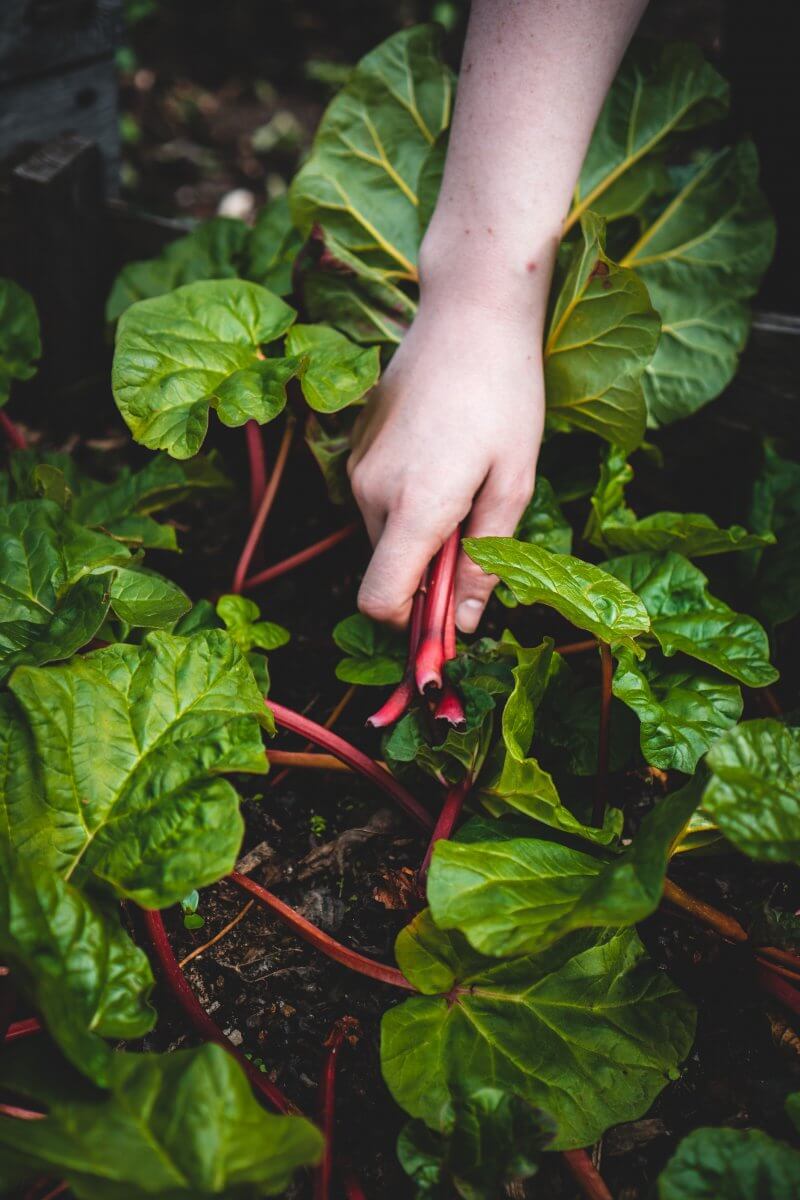
Collard Greens
You can use collard greens as a substitute for kale in many recipes. Did you know that collard greens belong to the same family as kale and they offer a similar nutritional profile? Collard greens are a great source of vitamins and minerals, including vitamins A, C, and K, as well as calcium, iron, magnesium, and potassium.
While collard greens have a slightly different flavor and texture compared to kale, they can be used in various dishes. Here’s how you can use collard greens as a substitute for kale:
- Sautéed or Stir-fried: Like kale, collard greens can be sautéed or stir-fried as a side dish or added to various recipes. Remove the tough stems and chop the leaves into bite-sized pieces before cooking. Collard greens have a slightly thicker texture, so remember they may take a little longer to cook compared to kale.
- Soups and Stews: You can use collard greens in soups and stews, just like kale. Add the chopped leaves towards the end of the cooking process to help retain their color and texture.
- Raw in Salads: While you can use kale raw in salads, collard greens are best eaten when you cook them. However, if you prefer to use collard greens in salads, you can thinly slice the leaves and then massage them with a little olive oil and lemon juice to soften their texture.
- Wraps and Rolls: You can use collard greens a a wrapper for various fillings, such as rice, beans, or vegetables. Blanch the collard green leaves to make them more pliable before using them as a wrap.
- Smoothies: You can add collard greens to smoothies for an extra nutritional boost. Keep in mind that collard greens have a stronger flavor compared to kale, so you may want to start with a smaller amount and adjust to your taste. You can always add more in, but you can’t take it back out!
- Pizza Topping: Instead of using kale as a pizza topping, you can try using collard greens. Just like with kale, tear the leaves into smaller pieces and scatter them over your pizza before baking.
Collard greens are a bit heartier and have a slightly stronger flavor than kale. Therefore, you might need to adjust the cooking time and the quantity used in your recipes. They also take a little longer to cook, so if you’re using them in dishes with shorter cooking times, consider blanching or pre-cooking them slightly before adding them to the recipe. Overall, collard greens can be a tasty and nutritious substitute for kale in many dishes.
Substitution quantitites: When substituting collard greens for kale in a recipe, you can use a 1:1 ratio by volume. Collard greens are similar to kale in texture and cooking characteristics, although remember they do have a slightly different flavor profile.
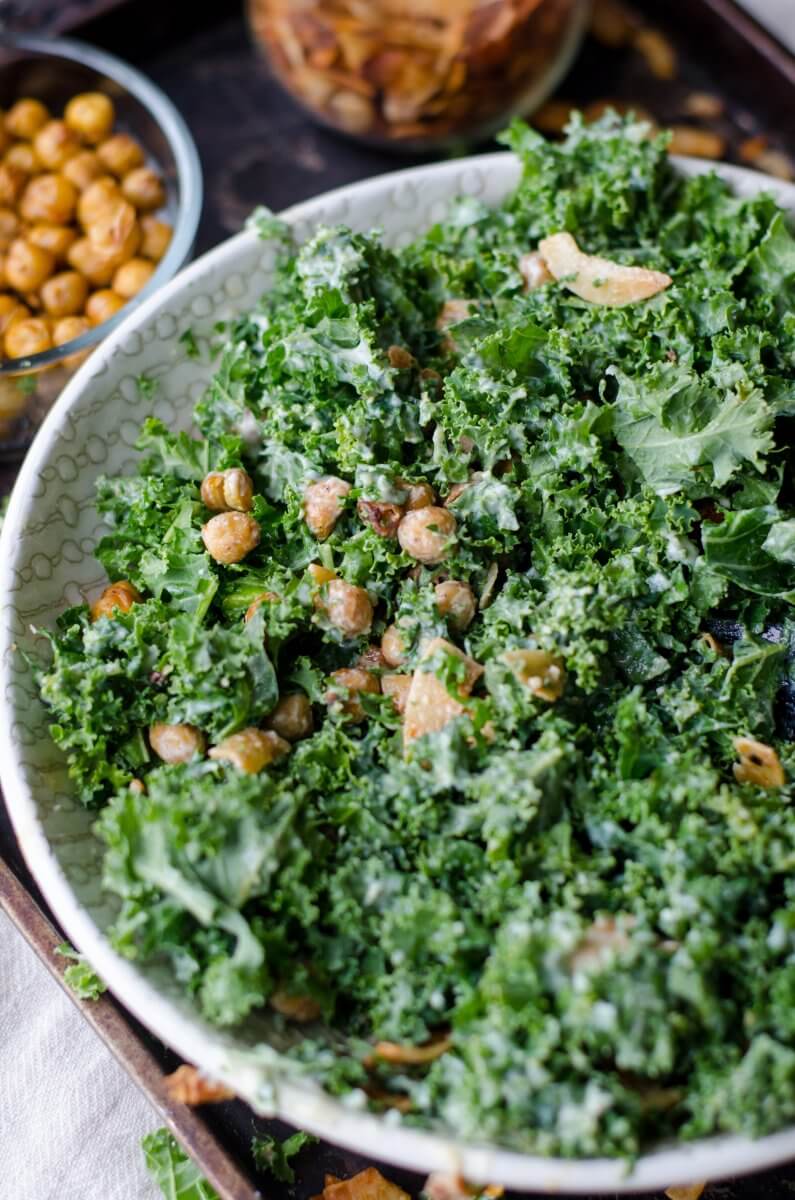
Cabbage as a kale substitute
Cabbage is a good substitute for kale in certain recipes, but there are some differences to consider. It is from a different plant family than kale, so it has distinct flavor and texture characteristics. While cabbage can work well in some dishes that call for kale, it may not be an ideal substitute in all cases. Here are some points to consider:
- Raw in Salads: You can use cabbage raw in salads, just like kale. However, it has a milder and sweeter flavor compared to kale’s earthy taste. You can shred or thinly slice cabbage and mix it with other salad ingredients. These could be vegtables such as carrots, bell peppers, and cucumbers.
- Sautéed or Stir-fried: Cabbage can be sautéed or stir-fried and used as a side dish or added to various recipes. While kale becomes tender when cooked, cabbage retains more crunch even after cooking. Remember this may change the overall texture of the dish.
- Soups and Stews: You can use cabbage in soups and stews, but remember it will have a different texture and taste compared to kale. Cabbage tends to become softer and more translucent when cooked, whereas kale can retain some of its firmness.
- Casseroles and Stir-fries: Cabbage can be a good substitute for kale in some casseroles and stir-fry dishes. However, be mindful of the differences in taste and texture.
While cabbage can be used as a substitute for kale in certain situations, keep in mind that it won’t provide the exact same flavor and texture as kale. Depending on the recipe, the taste and texture of the dish may vary. If you’re looking for a more similar taste and texture, consider using some of our other suggestions such as collard greens or Swiss chard.
Substitution quantitites: The cabbage to kale to ration is 1:1 by volume. Just remember that cabbage will cook down more and soften more quickly than kale.
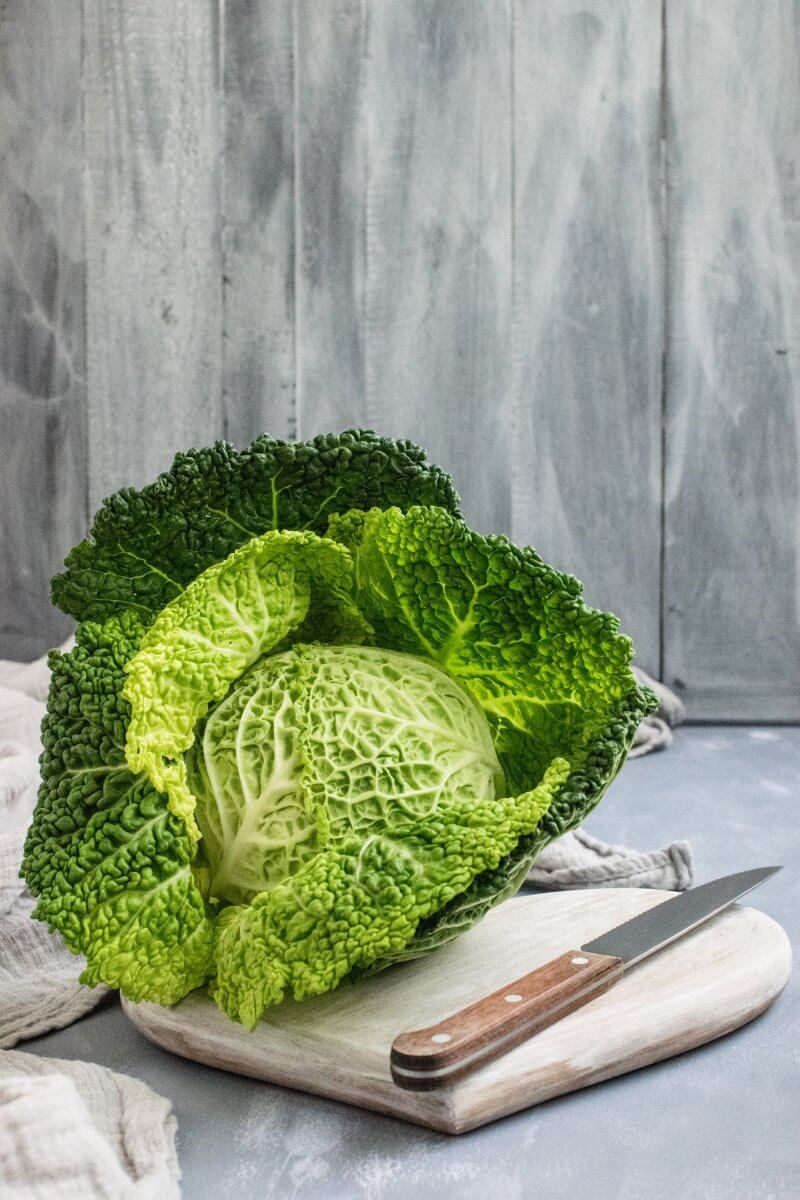
Arugula (Rocket)
You can use arugula (also known as rocket) as a substitute for kale in certain dishes, but it’s important to be aware of the flavor and texture differences between the two greens. It has a distinct peppery and slightly bitter taste, while kale has a more earthy and hearty flavor. Here are some ways you can use arugula as a substitute for kale:
- Raw in Salads: Use arugula in salads as it can be an excellent substitute for kale in raw preparations. Its peppery taste can add a zesty kick to salads when combined with other ingredients like cherry tomatoes, Parmesan cheese, nuts, and a light vinaigrette.
- Pizza Topping: Arugula makes a delicious pizza topping, and it can replace kale for a different flavor profile. After you bake the pizza, you can add a handful of fresh arugula on top for added freshness.
- Pesto: While traditional pesto uses basil, arugula can be used as a substitute or combined with basil to create an arugula pesto. This can be used as a sauce for pasta, sandwiches, or as a spread on crackers. Try making your own pesto at home!
- Sauteed or Stir-fried: While arugula is more delicate compared to kale, it can still be lightly sautéed or stir-fried. Keep in mind that arugula wilts quickly, so it should only be cooked for a short time.
- Smoothies: Use arugula in green smoothies, but be aware that its peppery taste may be more pronounced than kale’s earthy flavor.
When substituting arugula for kale, consider that arugula has a more delicate texture and will cook down faster. If you prefer a milder taste, you can mix arugula with other greens like spinach to balance the flavors. Additionally, keep in mind that arugula’s peppery taste might not suit every dish, so it’s essential to consider the overall flavor profile of the recipe before making the substitution.
Substitution quantitites: Due to arugula’s delicate texture and peppery flavor, you may need to use slightly more arugula than kale by volume. So, if a recipe calls for 2 cups of chopped fresh kale, you might want to use about 2.5 to 3 cups of chopped fresh arugula.
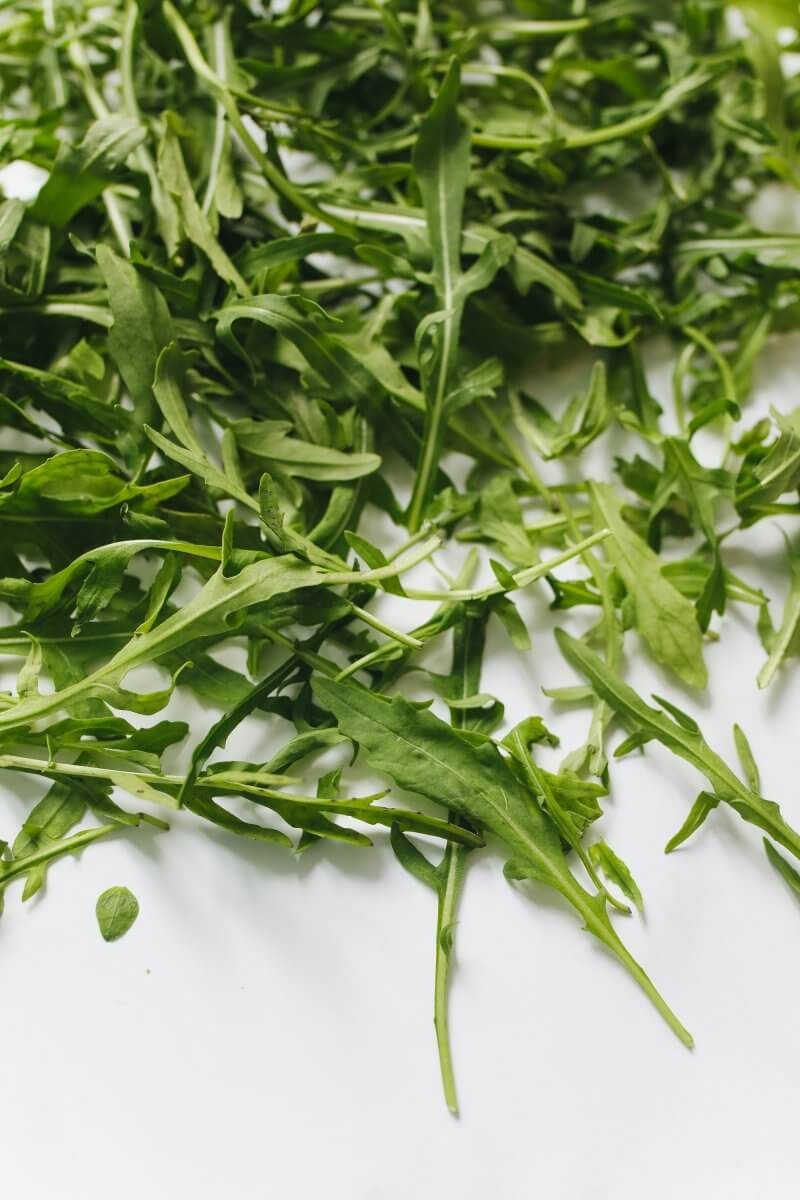
Bok Choy (Pak Choi)
Bok choy can be used as a substitute for kale in many recipes. It is also known as Chinese cabbage or pak choi. It has a nutritious leafy green with a mild and slightly sweet flavor. While it differs from kale in taste and texture, it can still work very well in various dishes. Here are some ways you can use bok choy as a substitute for kale:
- Stir-fried or Sautéed: Bok choy is often used in stir-fries and sautés, and it can be a great substitute for kale in these dishes. You should always separate the white stalks from the green leaves as they have different cooking times. Cook the stalks first before adding the leaves to the pan, as the leaves wilt quickly.
- Soups and Stews: Bok choy is a popular ingredient in Asian-style soups and stews. It can be used as a substitute for kale in these recipes, adding a tender and slightly crisp texture to the dish.
- Wraps and Rolls: Bok choy leaves can be used as a wrap for fillings, similar to how kale leaves are used. They are more tender and have a milder flavor, making them suitable for wraps.
- Pizza Topping: While not a traditional pizza topping, you can experiment with using bok choy as a pizza topping for a unique twist. Thinly slice the bok choy and add it as a topping before baking the pizza.
When substituting bok choy for kale, consider the cooking time and the dish’s overall flavor profile. Bok choy cooks quickly, so you may need to adjust the cooking time if the original recipe requires kale to be cooked for an extended period. Additionally, bok choy has a milder taste, so you may want to add extra seasonings or flavors to enhance the dish to your liking. Overall, bok choy can be a versatile and tasty substitute for kale in various recipes.
Substitution quantitites: Use a 1:1 ratio as a starting point, but be mindful of the cooking process as bok choy cooks faster than kale.
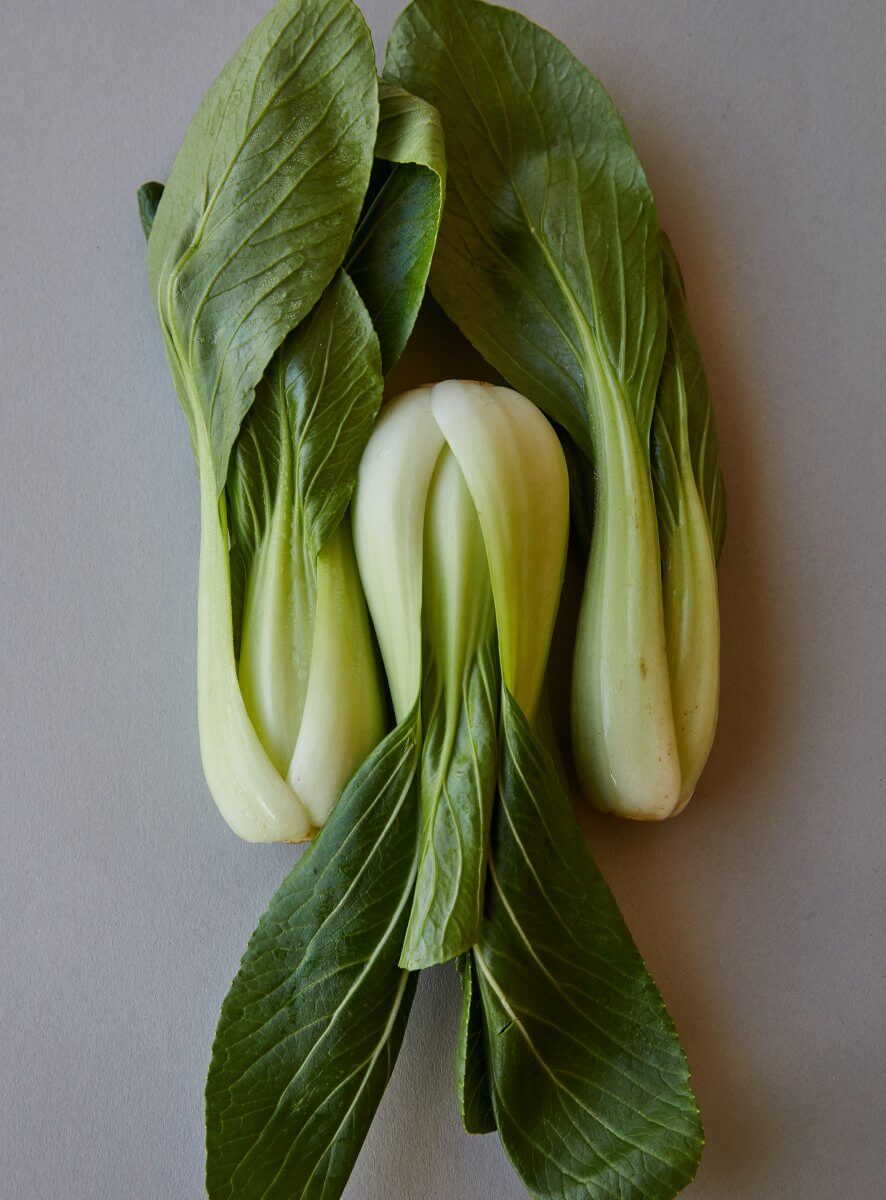
Watercress as a kale substitute
Watercress can be used as a substitute for kale in certain recipes, but it’s important to note that watercress has a unique and peppery flavor that differs from kale’s earthy taste. While the substitution may not work in all dishes, watercress can be a refreshing and nutritious alternative in specific preparations. Here are some ways you can use watercress as a substitute for kale:
- Raw in Salads: Watercress is commonly used in salads and can be a great substitute for kale in raw preparations. Its peppery taste adds a zesty kick to salads when combined with other ingredients like cherry tomatoes, cucumbers, radishes, and a tangy dressing.
- Soups and Stews: In some recipes, watercress can be used as a substitute for kale in soups and stews. However, due to its delicate texture, it’s best to add watercress towards the end of the cooking process to retain its flavor and color.
- Smoothies: Watercress can be added to green smoothies for a peppery twist. It pairs well with fruits like pineapple and citrus for a refreshing taste.
Keep in mind that watercress is more delicate than kale and can wilt quickly when exposed to heat, so it may not be suitable for certain cooking methods that require longer cooking times. When using watercress as a substitute for kale, consider the overall flavor profile of the dish and how the peppery taste of watercress may impact it. Additionally, you can mix watercress with other greens like spinach or arugula to balance the flavors and textures. Experimentation is key to finding the best fit for your recipes!
Substitution quantitites: If a recipe calls for 1 cup of cooked kale, you may start with 1.5 to 2 cups of fresh watercress.
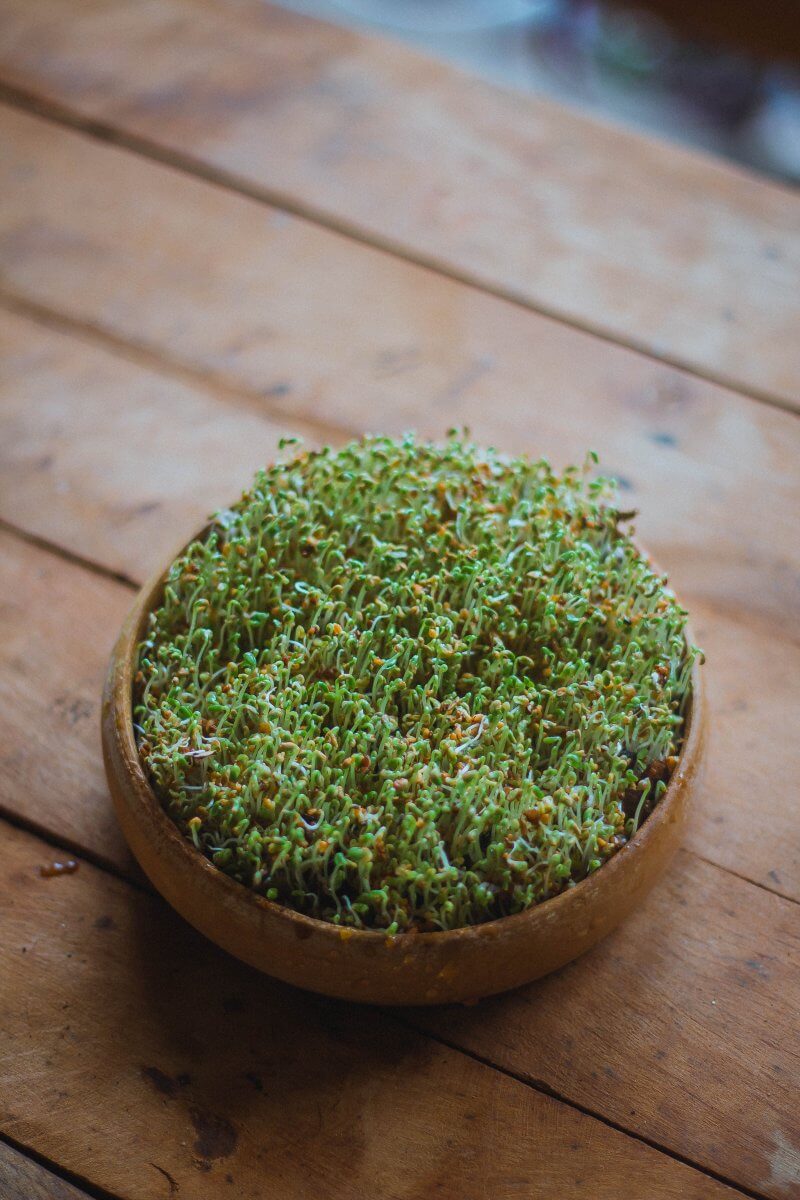
Tatsoi as a kale substitute
Tatsoi can be used as a substitute for kale in many recipes. It is a leafy green vegetable with a mild and slightly mustard-like flavor. It belongs to the same family as kale and shares some similarities in nutritional content. While tatsoi has a different taste and texture compared to kale, it can still be a delicious and nutritious alternative in various dishes. Here are some ways you can use tatsoi as a substitute for kale:
- Raw in Salads: Use tatsoi raw in salads, just like kale. Its tender leaves and mild flavor make it a great addition to fresh salads, mixed with other greens, vegetables, and dressings.
- Stir-fried or Sautéed: Add lightly stir-fried or sautéed Tatsoi as a side dish or added to stir-fries and Asian-inspired recipes. Like kale, tatsoi can retain its texture when cooked, but it may require less cooking time due to its delicate leaves.
- Soups and Stews: Use Tatsoi in soups and stews, similar to kale. Add the chopped tatsoi towards the end of the cooking process to preserve its texture and mild flavor.
- Wraps and Rolls: You can use Tatsoi as a wrapper for various fillings, similar to how you would use kale leaves for wraps. As they are more tender and have a milder taste, they are very suitable for this purpose.
- Pizza Topping: While not a traditional pizza topping, you can experiment with using tatsoi as a pizza topping for a unique twist. Add the leaves to the pizza before baking.
- Smoothies: You can add Tatsoi to green smoothies for an extra nutritional boost. Its mild flavor can blend well with fruits and other vegetables.
As with any substitution, consider the taste and texture differences between tatsoi and kale, and how it will complement the other ingredients in your recipe. Tatsoi is generally more delicate than kale, so it may require less cooking time in dishes that involve heat. If you’re looking for a milder green with a unique taste, tatsoi can be a great alternative to kale.
Substitution quantitites: When substituting tatsoi for kale in a recipe, you can generally use a 1:1 ratio by volume as a starting point.
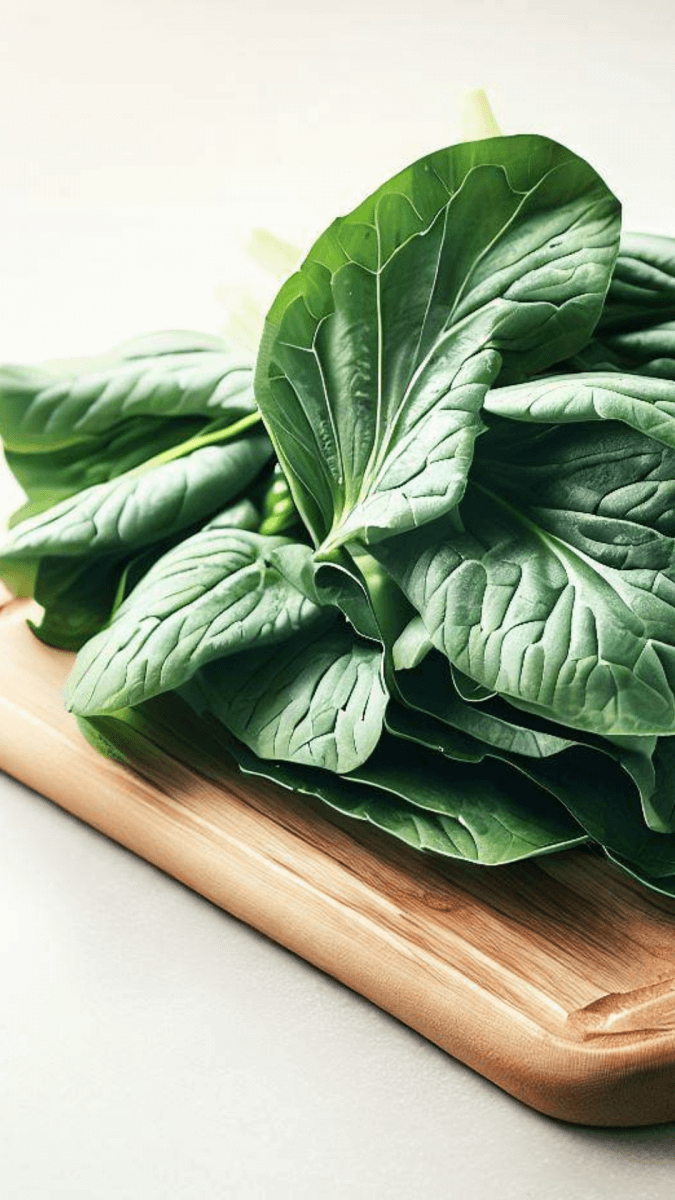
Brussel Sprouts
Brussel Sprouts are not just for Christmas! While Brussels sprouts and kale are both nutritious vegetables, they have distinct flavors and textures, which may make them less interchangeable in some recipes. However, you can use Brussels sprouts as a substitute for kale in certain dishes, especially when the recipe involves roasting, sautéing, or grilling. Here are some considerations and ways you can use Brussels sprouts as a substitute for kale:
- Roasted or Sautéed: You can roast Brussels sprouts, or sautéed them, similar to kale. Trim the ends of the Brussels sprouts, cut them in half, and toss them with olive oil, salt, and pepper before roasting or sautéing until they become tender and slightly caramelized.
- Salads: You can use Brussels sprouts raw in salads, but remember they have a crunchier texture compared to kale. If you want to use them raw in salads, consider slicing them thinly and massaging them with some lemon juice or dressing to soften them slightly.
- Side Dish: Brussels sprouts can make a tasty and nutritious side dish when cooked with garlic, bacon, or other complementary flavors.
- Stir-fries: Brussels sprouts are firmer than kale, but you can still use them in stir-fries to add a distinct taste and texture to the dish.
- Grilled: Grilled Brussels sprouts can make a great addition to your BBQ menu and can serve as a substitute for grilled kale.
Keep in mind that Brussels sprouts have a stronger and slightly bitter flavor compared to kale, so the substitution may alter the taste of your dish. If you prefer a milder taste, you may want to mix Brussels sprouts with other greens or vegetables to balance the flavors. Additionally, Brussels sprouts take longer to cook than kale, so you may need to adjust cooking times accordingly.
Overall, while Brussels sprouts can work as a substitute for kale in certain dishes, they are not a direct one-to-one replacement due to their unique flavor and texture.
Substitution quantitites: Use a 1:1 ratio by volume as a starting point. So, if a recipe calls for 2 cups of chopped fresh kale, you can start with 2 cups of chopped fresh Brussels sprouts.
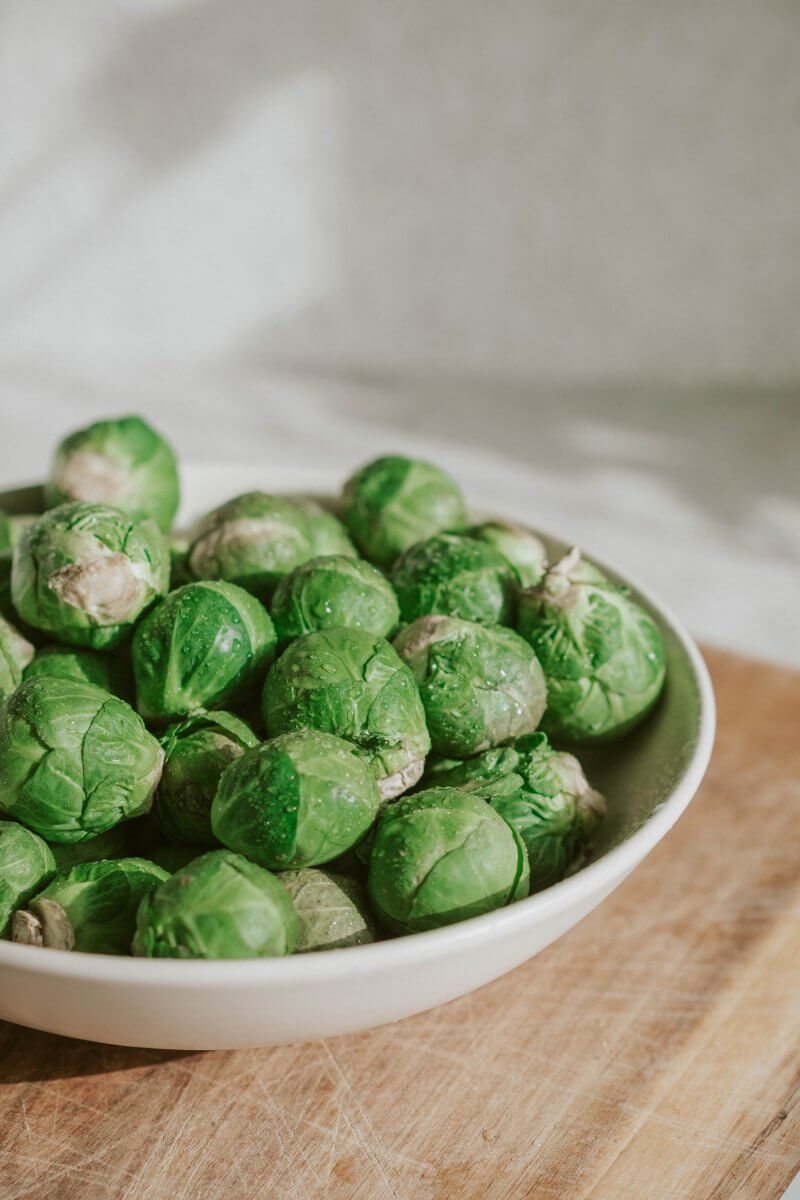
Mustard Greens
You can use mustard greens as a flavorful substitute for kale in various recipes. While they have a slightly different taste and texture, their peppery and slightly spicy flavor can add a unique twist to your dishes. Here are some ideas on how to use mustard greens as a substitute for kale:
- Sautéed Mustard Greens: Just like kale, mustard greens can be sautéed with garlic, onions, and a splash of olive oil or broth. Sauté them until they are tender but still have some texture. You can they try adding a dash of soy sauce or balsamic vinegar for extra flavor.
- Stir-Fries: Add mustard greens to stir-fries along with other vegetables, tofu, or meat. Their bold flavor will complement the other ingredients in the stir-fry.
- Soups and Stews: Add chopped mustard greens to your favorite soups and stews. They can add a zesty kick and nutritional boost to the dish in place of kale.
- Salads: Mustard greens are spicier than kale, but you can still use them in salads. Consider mixing them with milder greens like spinach or lettuce to balance the flavors.
- Smoothies: If you enjoy adding kale to your smoothies for an extra nutrient boost, try substituting some or all of the kale with mustard greens. Keep in mind that mustard greens have a more pronounced flavor. Therefore it would be wise to start with a smaller amount and adjust accordingly to your taste.
- Pesto: Make a mustard greens pesto instead of the traditional basil pesto. Blend mustard greens with nuts, garlic, olive oil, and cheese (if desired). This will create a tangy and peppery pesto that you can use as a sauce for pasta, sandwiches, or as a dip.
- Steamed or Braised: Steaming or braising mustard greens can help mellow out their spiciness while retaining their nutritional value. Drizzle with a bit of lemon juice or vinegar for added brightness.
Remember that mustard greens can be strong in flavor, so you might want to adjust the amount used in recipes based on your personal taste preferences. Additionally, as with any leafy greens, be sure to clean them thoroughly before use to remove any dirt or debris. Enjoy experimenting with mustard greens to discover new and exciting ways to incorporate them into your meals!
Substitution quantitites: When substituting mustard greens for kale in a recipe, you can use a similar 1:1 ratio by volume.
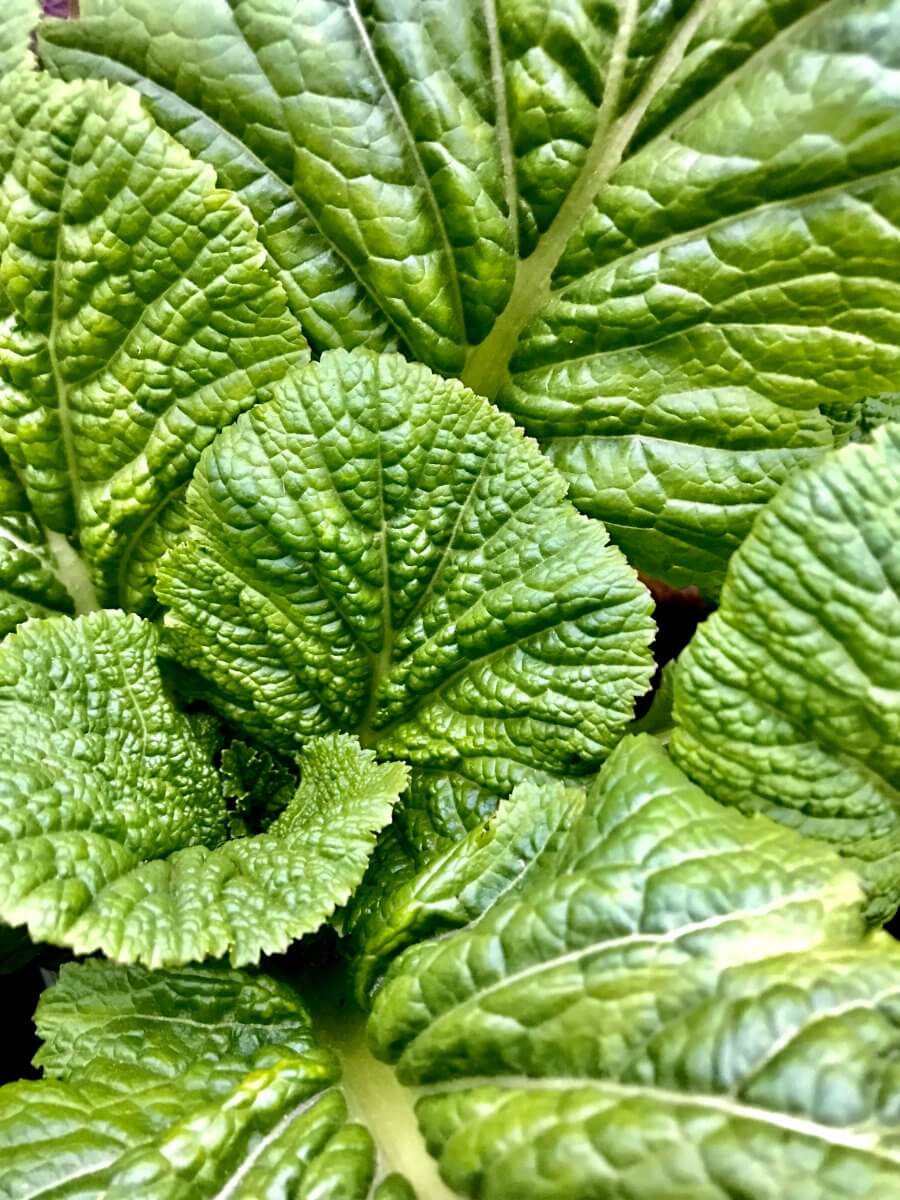
Beet Greens as a kale substitute
Beet greens can be used as a substitute for kale in many recipes. They are the leafy tops of the beetroot vegetable and are often overlooked, but they are highly nutritious and delicious. Like kale, they belong to the Brassica family and share some similarities in flavor and texture. Here are some ways you can use beet greens as a substitute for kale:
- Sautéed or Stir-fried: Beet greens can be sautéed or stir-fried as a side dish or added to various recipes, similar to kale. They have a slightly earthy flavor and tender texture when cooked.
- Soups and Stews: Use beet greens in soups and stews, just like kale. Add the chopped greens towards the end of the cooking process to preserve their vibrant color and prevent them from becoming overcooked.
- Raw in Salads: Add raw beet greens to salads, much like kale. Younger leaves are best for salads, as they are more tender. Mix them with other salad ingredients and dress with your favorite dressing.
- Wraps and Rolls: Use beet greens as a leafy wrapper for various fillings, similar to how you would use kale for wraps.
- Smoothies: While not as commonly used in smoothies as kale or spinach, you can try adding beet greens to your green smoothies for an extra nutrient boost. Beet greens have a distinct flavor that may be more noticeable in smoothies.
- Pizza Topping: If you enjoy using kale as a pizza topping, you can experiment with using beet greens instead. Add the chopped greens to the pizza before baking.
Beet greens are a versatile and nutritious option, and they can provide a unique flavor and color to your dishes. When using beet greens as a substitute for kale, consider that they have a slightly milder taste, so you may need to adjust the seasonings to your preference. Also, remember to wash the beet greens thoroughly before using them in your recipes, as they can have dirt or grit trapped in the leaves.
Substitution quantitites: When substituting beet greens for kale you can use a ratio of 1:1.
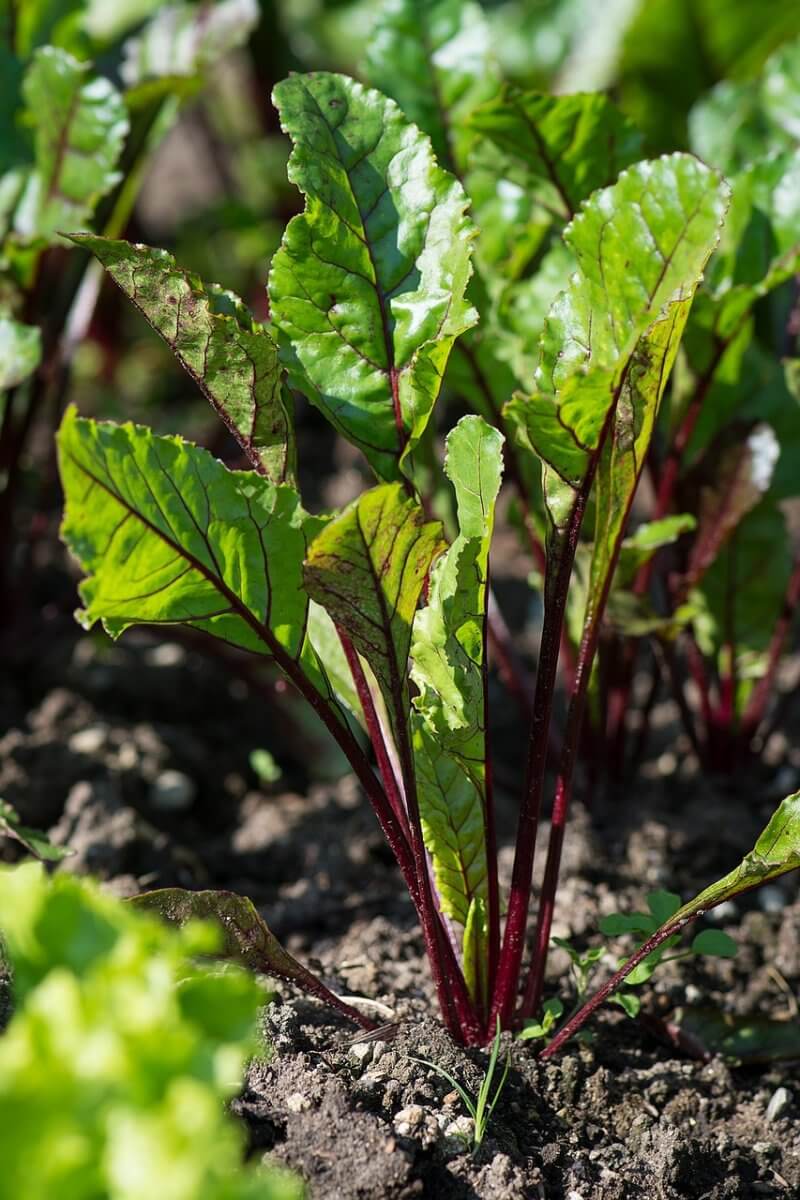
FAQs
Can you eat kale in the summer?
Yes, you can eat kale in the summer! While kale is often associated with cooler weather and is a popular vegetable in fall and winter dishes, it can still be enjoyed during the summer months. Try using it in fresh salads, or blend with fruits and berries to make delicious smoothies. You can also grill kale, or enjoy roasted as a side dish or added to summer vegetable medleys for a smoky flavor.
It’s best to store kale in the refrigerator in a plastic bag or airtight container to maintain freshness. Always wash and dry kale thoroughly before storing.
Why can’t you eat kale every day?
While kale is highly nutritious and beneficial when consumed as part of a balanced diet, there are a few considerations to keep in mind. Eating kale every day may limit the variety of other nutrients and phytochemicals that can be obtained from different vegetables and fruits. Remember, it’s important to have a diverse diet to ensure a broad spectrum of essential nutrients.
If you are someone who suffers from a thyroid condition you need to be aware that kale, like other cruciferous vegetables (such as broccoli and cabbage), contains compounds called goitrogens. These compounds can interfere with thyroid function by inhibiting iodine uptake, potentially affecting thyroid hormone production. However, cooking kale can reduce the goitrogenic properties.
While kale is a nutrient-dense vegetable with numerous health benefits, it’s important to remember that you should consume it in moderation and consider individual health factors to maintain a balanced and varied diet.
Summary for Kale substitutes
Okay – that’s you all sorted with suitable substitutes for kale.
In conclusion, you can use several types of greens as a substitute for kale in various dishes. Each green brings its own unique flavor and texture, offering different taste experiences in your recipes. Here’s a quick recap of the options:
- Spinach: Milder flavor, versatile, and suitable for salads, smoothies, sautéed dishes, and soups.
- Swiss Chard: Earthy flavor, colorful, and a good substitute for kale in sautéed dishes, soups, and salads.
- Collard Greens: Hearty texture with a slightly bitter taste, a good choice for cooked dishes like stir-fries, soups, and sautéed preparations.
- Cabbage: Milder flavor and crunchier texture, used in sautéed dishes, coleslaw, and raw in salads.
- Arugula: Peppery flavor, best for salads and sandwiches, adding a zesty element to dishes.
- Tatsoi: Mild mustard-like taste, suitable for salads, stir-fries, and sautéed dishes.
- Watercress: Peppery flavor, used in salads and as a garnish for added zest.
- Brussels Sprouts: Robust flavor and crunchy texture, suitable for roasted, sautéed, and grilled dishes.
- Beet Greens: With a slightly earthy flavor and tender leaves, you can use beet greens in sautéed dishes, soups, salads, and wraps.
The choice of which substitute to use will depend on the specific dish you are preparing and your personal taste preferences. Whether you’re looking for a milder flavor, added crunch, or a peppery kick, these suggestions all offer a variety of options to enhance your culinary creations. Enjoy the diverse flavors and nutrients they bring to your meals!
We have gathered together a lot more facts on ingredients such as herbs, spices, oils, nuts, etc. if you would like to learn some more.
